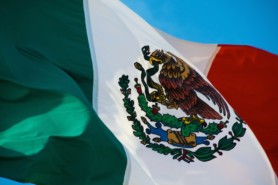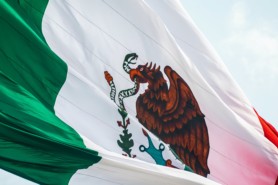Mexico’s mid-term elections on 6 June 2021 were marred by violent attacks against candidates, journalists and law enforcement officers. With support from the Global Initiative Against Transnational Organized Crime (GI-TOC) and the Center for U.S.–Mexican Studies, the Mexico Violence Resource Project sheds light on how crime threatens the country’s democracy.
Across two electoral cycles, in 2018 and 2021, politicians and candidates in Mexico have been killed at alarming rates. Voting Amid Violence, an initiative by the Mexico Violence Resource Project, is a collection of essays authored by GI-TOC Resilience Fund grantees and members of the GI Network, as well as other scholars and journalists.
Together, these essays – available both in English and in Spanish – reinforce the complexity of political violence in Mexico, challenging assumptions, raising questions, and providing local perspectives on violence and its relationship with democratic politics. The tapestry of stories presented shows how local power struggles entangle political outsiders or journalists critical of the regime.
Criminal groups, so often portrayed as the principal perpetrators of this violence, are deeply embedded in Mexico. However, their behaviour presents a high degree of variation. In Sinaloa, for example, it is an open secret that political candidates make agreements with the Sinaloa Cartel, but violence is revealed through political vulnerability to organized crime capture rather than gunfire. In Chihuahua, on the other hand, narco-politics have had a deadlier toll for citizens and for journalists who expose the collusion of criminally controlled governments.
Organized crime violence is shaped by historical processes and local dynamics, and flourishes as a result of a number of social and political contexts. These essays provide penetrating new insight into Mexico’s intricate criminal and political landscape.
Photo: Jezael Melgoza (Unsplash)
Las elecciones intermedias celebradas en México el 6 de junio de 2021 estuvieron marcadas por ataques violentos hacia candidatos, periodistas y agentes de policía. Con el apoyo de The Global Initiative Against Transnational Organized Crime (la Iniciativa Global contra el Crimen Organizado Transnacional, GI-TOC) y el Center for U.S.–Mexican Studies, el proyecto Mexico Violence Resource Project explora cómo la criminalidad representa una amenaza para la democracia en el país.
A lo largo de dos ciclos electorales, en 2018 y 2021, candidatas y candidatos en México han sido asesinados en números alarmantes. Democracia entre balas, iniciativa del Mexico Violence Resource Project, es una antología de ensayos escrita por beneficiarios del Fondo Resiliencia y miembros de la Red de Expertos de GI-TOC, así como otros académicos y periodistas.
Juntos, estos ensayos, disponibles tanto en inglés como en español, enfatizan la complejidad de la violencia política en México, cuestionando supuestos, generando preguntas y ofreciendo perspectivas locales sobre la violencia y su relación con la política en la democracia. Los matices presentados muestran cómo las luchas locales por el poder involucran a actores políticos externos o periodistas críticos hacia el régimen.
Los grupos criminales, generalmente presentados como los perpetradores de esta violencia, están profundamente arraigados en México. No obstante, su comportamiento varía de manera considerable. En Sinaloa, por ejemplo, es un secreto a voces que los candidatos hacen arreglos con el cártel de Sinaloa, pero la violencia se palpa más bien a través de la vulnerabilidad política a la infiltración del crimen organizado que por medio de tiroteos. En Chihuahua, en cambio, la narcopolítica ha causado más muertes, tanto de ciudadanos como de periodistas que exponen la colusión de gobiernos bajo control criminal.
La violencia del crimen organizado crece a través de procesos históricos y dinámicas locales, y prospera como resultado de diferentes contextos sociales y políticos. Esta antología ofrece una nueva perspectiva sobre el complejo panorama criminal y político mexicano.



